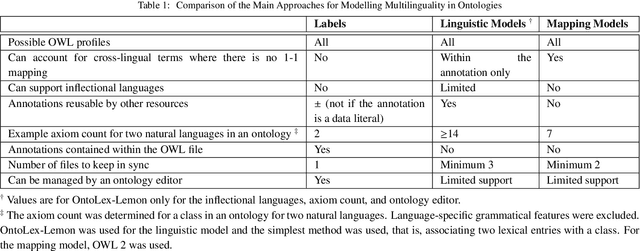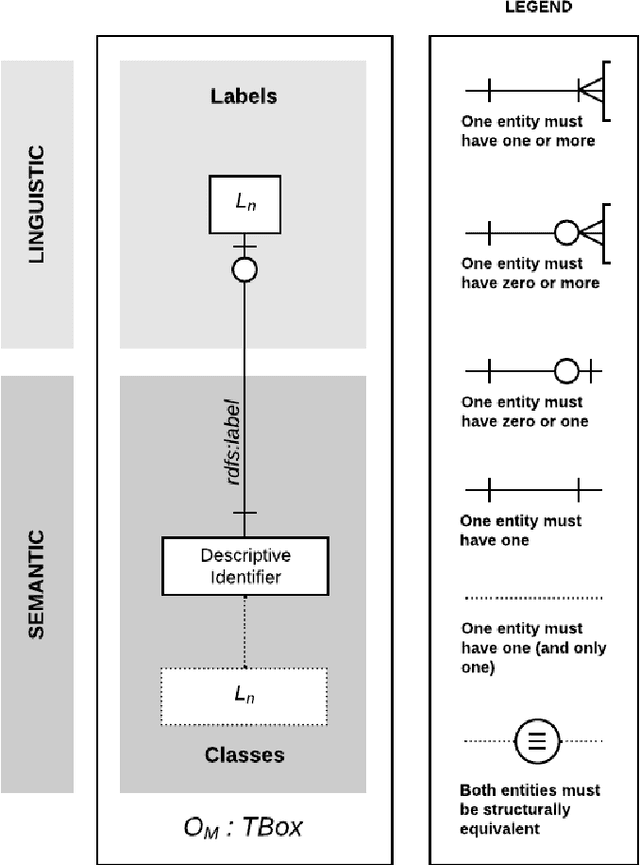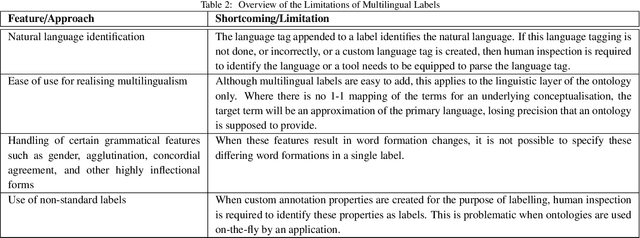A Review of Multilingualism in and for Ontologies
Paper and Code
Oct 06, 2022



The Multilingual Semantic Web has been in focus for over a decade. Multilingualism in Linked Data and RDF has shown substantial adoption, but this is unclear for ontologies since the last review 15 years ago. One of the design goals for OWL was internationalisation, with the aim that an ontology is usable across languages and cultures. Much research to improve on multilingual ontologies has taken place in the meantime, and presumably multilingual linked data could use multilingual ontologies. Therefore, this review seeks to (i) elucidate and compare the modelling options for multilingual ontologies, (ii) examine extant ontologies for their multilingualism, and (iii) evaluate ontology editors for their ability to manage a multilingual ontology. Nine different principal approaches for modelling multilinguality in ontologies were identified, which fall into either of the following approaches: using multilingual labels, linguistic models, or a mapping-based approach. They are compared on design by means of an ad hoc visualisation mode of modelling multilingual information for ontologies, shortcomings, and what issues they aim to solve. For the ontologies, we extracted production-level and accessible ontologies from BioPortal and the LOV repositories, which had, at best, 6.77% and 15.74% multilingual ontologies, respectively, where most of them have only partial translations and they all use a labels-based approach only. Based on a set of nine tool requirements for managing multilingual ontologies, the assessment of seven relevant ontology editors showed that there are significant gaps in tooling support, with VocBench 3 nearest of meeting them all. This stock-taking may function as a new baseline and motivate new research directions for multilingual ontologies.
 Add to Chrome
Add to Chrome Add to Firefox
Add to Firefox Add to Edge
Add to Edge